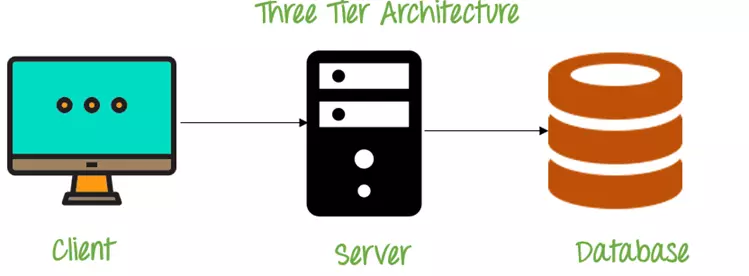Hi everyone, inside this article we will see the concept of DBMS – Architecture.
DBMS or Database Management System can also be categorized into tiers based on the separation of different functionalities.
The architecture of a DBMS influences its design. It can be centralised, decentralised, or hierarchical in nature. A DBMS’s architecture can be classified as single-tier or multi-tier. An n-tier architecture divides the entire system into related but independent n modules that can be modified, altered, changed, or replaced independently.
The DBMS is the only entity in a 1-tier architecture where the user sits directly on it and uses it. Any changes made here will have an immediate impact on the DBMS. It does not provide end-users with useful tools. Single-tier architecture is typically preferred by database designers and programmers.
If the DBMS architecture is two-tiered, it must have an application that allows access to the DBMS. Programmers use a two-tier architecture to access the DBMS through an application. In terms of operation, design, and programming, the application tier is completely independent of the database.
3-Tier Architecture
Here are the commonly used tiers in DBMS:

Client Tier: This tier includes the user interface and the application logic that runs on the client-side. It interacts with the user and sends requests to the middle-tier for processing.
Middle Tier: This tier includes the application server and the web server that runs on a separate machine from the database server. It processes the client requests, retrieves the required data from the database server, and sends the data back to the client.
Database Tier: This tier includes the database server that stores the data and performs data management tasks. It receives the requests from the middle tier, processes the requests, and sends back the results to the middle tier.
The three-tier architecture provides several benefits such as scalability, modularity, and security. By separating the client, middle, and database tiers, the application can be easily scaled by adding or removing servers to each tier.
The modularity of the architecture enables developers to make changes to each tier without affecting the other tiers. The separation of the database tier provides better security by preventing direct access to the database from the client-side.
We hope this article helped you to understand DBMS – Architecture in a very detailed way.
Online Web Tutor invites you to try Skillshike! Learn CakePHP, Laravel, CodeIgniter, Node Js, MySQL, Authentication, RESTful Web Services, etc into a depth level. Master the Coding Skills to Become an Expert in PHP Web Development. So, Search your favourite course and enroll now.
If you liked this article, then please subscribe to our YouTube Channel for PHP & it’s framework, WordPress, Node Js video tutorials. You can also find us on Twitter and Facebook.
